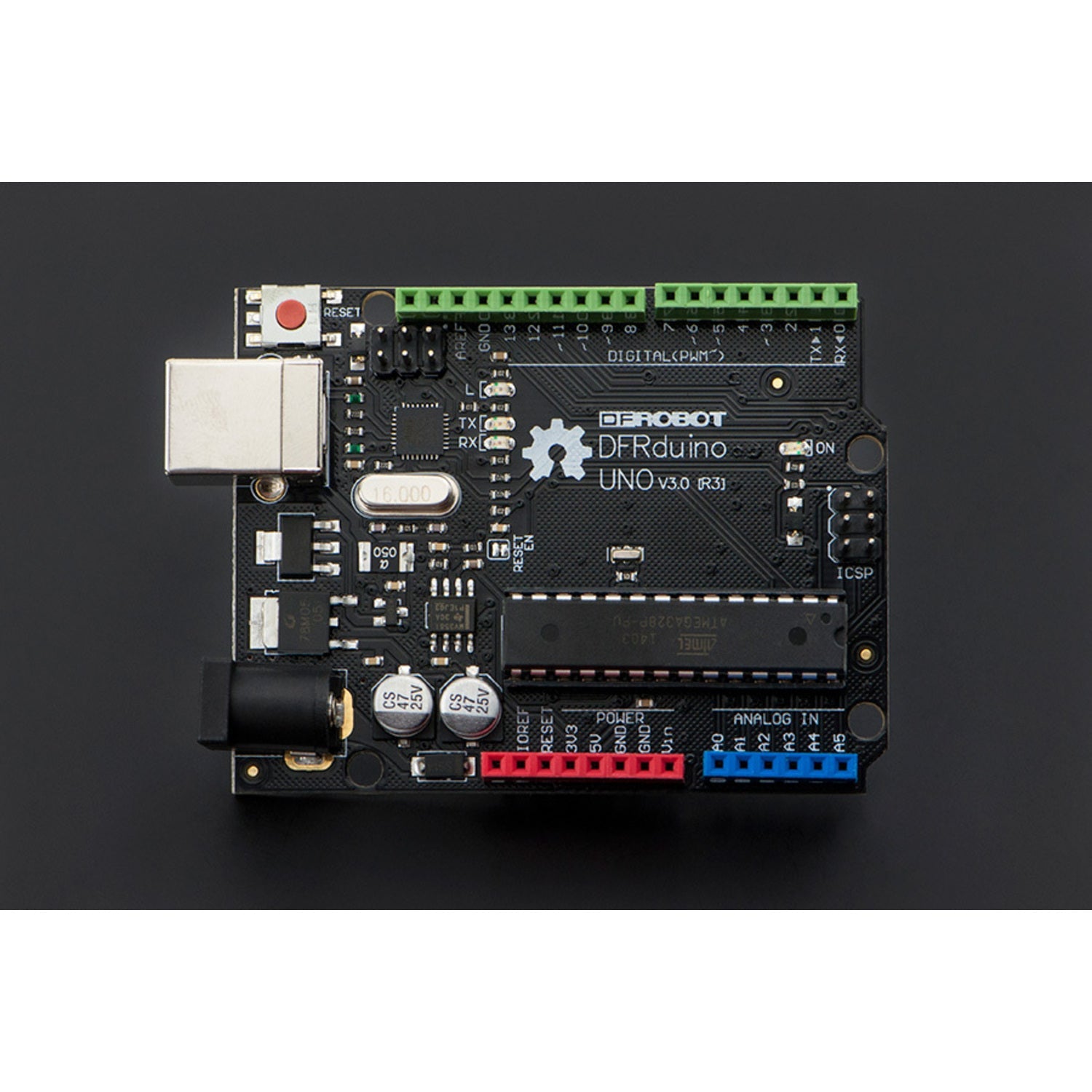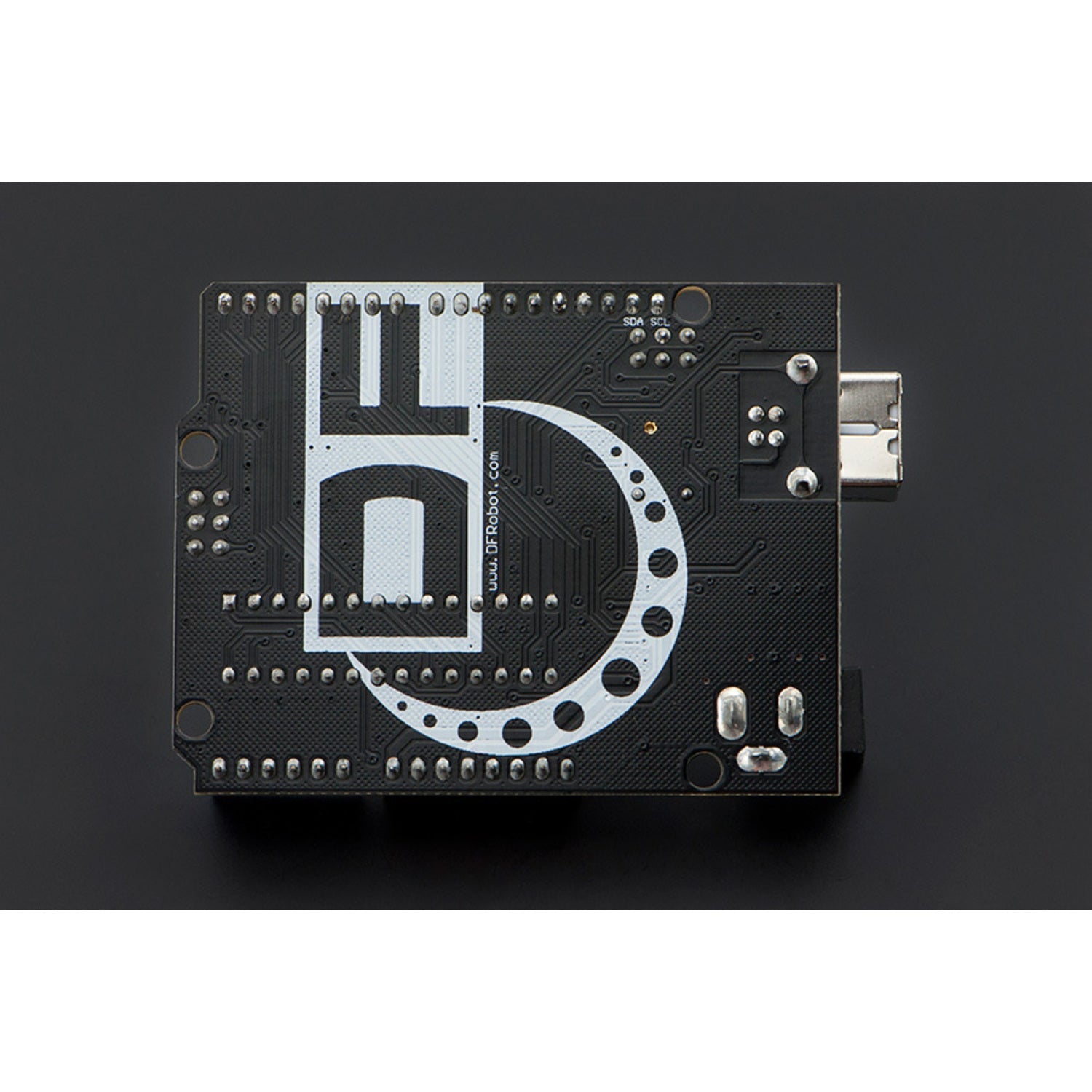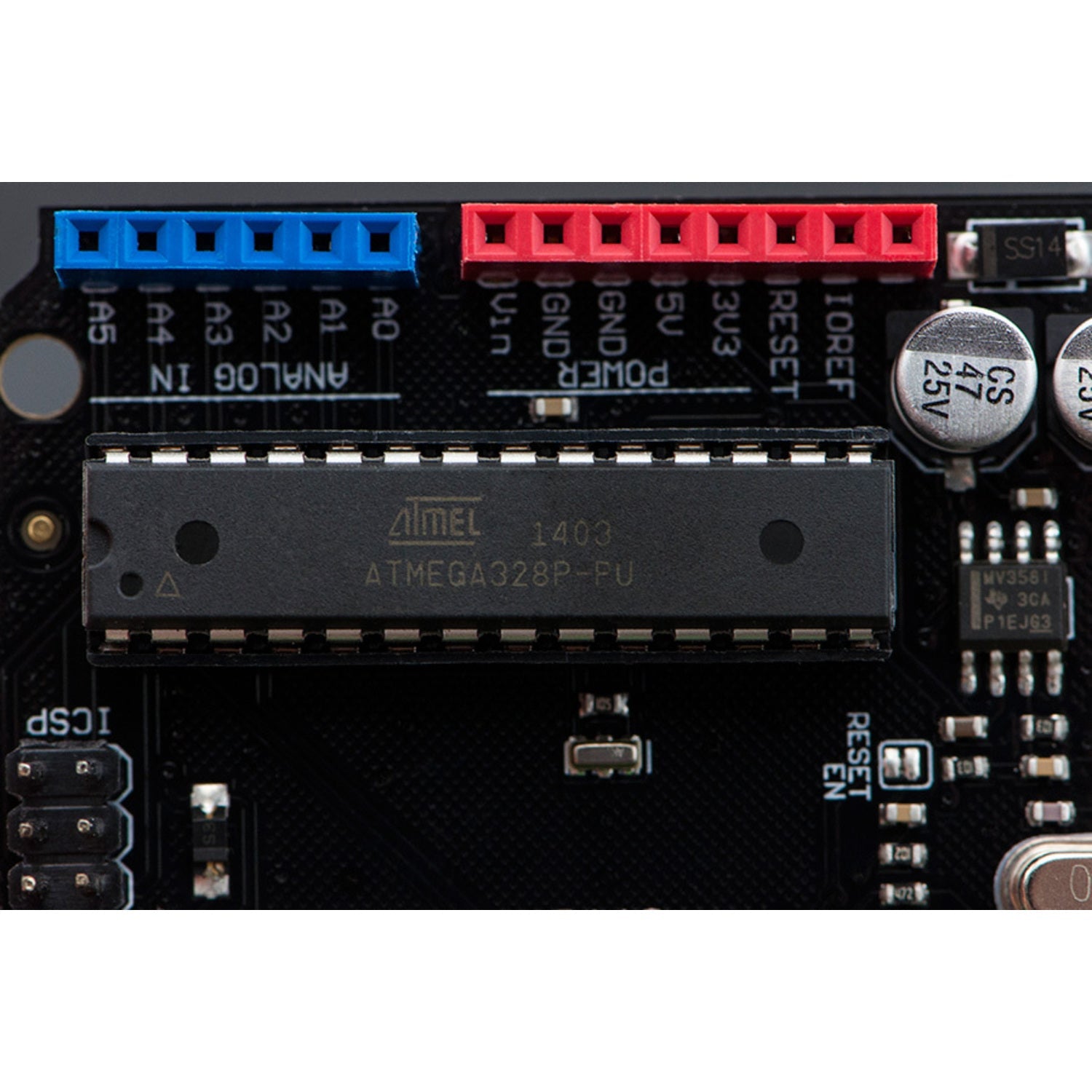The DFRduino Uno V3.0 from DFRobot is a compact physical - world computing board ideal for academics and development. It's a user - friendly microcontroller board that's fully compatible with the Arduino UNO R3 and the Arduino IDE open - source development environment, which uses the Processing / Wiring language. You can use it to build stand - alone interactive objects or connect it to software on your computer, like Flash, Processing, or MaxMSP. The open - source IDE can be freely downloaded for Mac OS X, Windows, and Linux. This board has an ATmega16U2 programmed as a USB - to - serial converter. A great feature is that it uses a DIP package AVR Chip. You can remove it to update or reprogram the chip's firmware or use it in a more compact project. The headers of our new DFRduino microcontroller use different colors to mark different types of I/O ports: red for the power section, blue for analog I/O, and green for digital I/O. These colors match our sensor cables, making it super easy to connect sensors and identify analog and digital sides. The Arduino Uno is based on the ATmega328. It has 14 digital input/output pins (6 can be used as PWM outputs), 6 analog inputs, a 16 MHz crystal oscillator, a USB connection, a power jack, an ICSP header, and a reset button. Just connect it to your computer via USB or power it with an AC - to - DC adapter or battery to start. This board also has SDA and SCL pins near the AREF pin and two new pins near the RESET pin. The IOREF allows shields to adapt to the board's voltage. In the future, shields will be compatible with both 5V AVR - based boards and 3.3V Arduino Due boards. Specification: Microcontroller is ATmega328 (DIP Package), operating voltage is 5V, recommended input voltage is 7 - 12V, input voltage limits are 6 - 20V, 14 digital I/O pins (6 with PWM output), 6 analog input pins, 40 mA DC current per I/O pin, 50 mA DC current for 3.3V pin, 32 KB flash memory (2KB used by bootloader), 2 KB SRAM (ATmega328), 1 KB EEPROM (ATmega328), 16 MHz clock speed, size is 75 x 54 x 15 mm (2.95 x 2.13 x 0.59'), and it's RoHS compliant. Documents include ATmega328P datasheet, Arduino Home Page, How - to guide, and Programming Reference. Shipping list includes 1 DFRduino Uno V3.0.




Using the DFRduino Uno V3.0 is quite straightforward. First, if you want to start programming, download the free Arduino IDE from its official website for your operating system (Mac OS X, Windows, or Linux). Then, connect the board to your computer using a USB cable. Once connected, you can start writing and uploading your code in the Arduino IDE. You can also power the board with an AC - to - DC adapter or a battery. When connecting sensors, use the color - coded headers. Red is for power, blue for analog sensors, and green for digital ones. This makes it easy to know where to plug in your sensors. As for the ATmega328 DIP package chip, if you need to update or reprogram its firmware, you can carefully remove it. Just make sure to handle it gently to avoid any damage. For power, keep in mind that the recommended input voltage is between 7 and 12V, and the limits are 6 to 20V. Don't exceed these limits to prevent damaging the board. Also, since it's RoHS compliant, it's environmentally friendly. When not in use, store the board in a dry and clean place. Avoid exposing it to extreme temperatures or humidity. This will help keep the board in good working condition for a long time.







